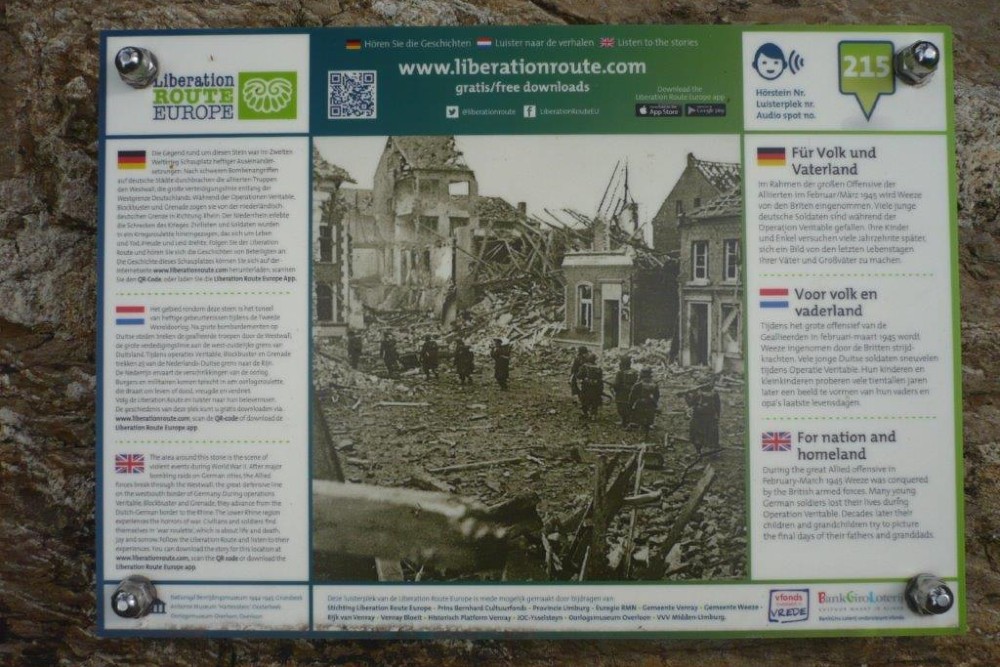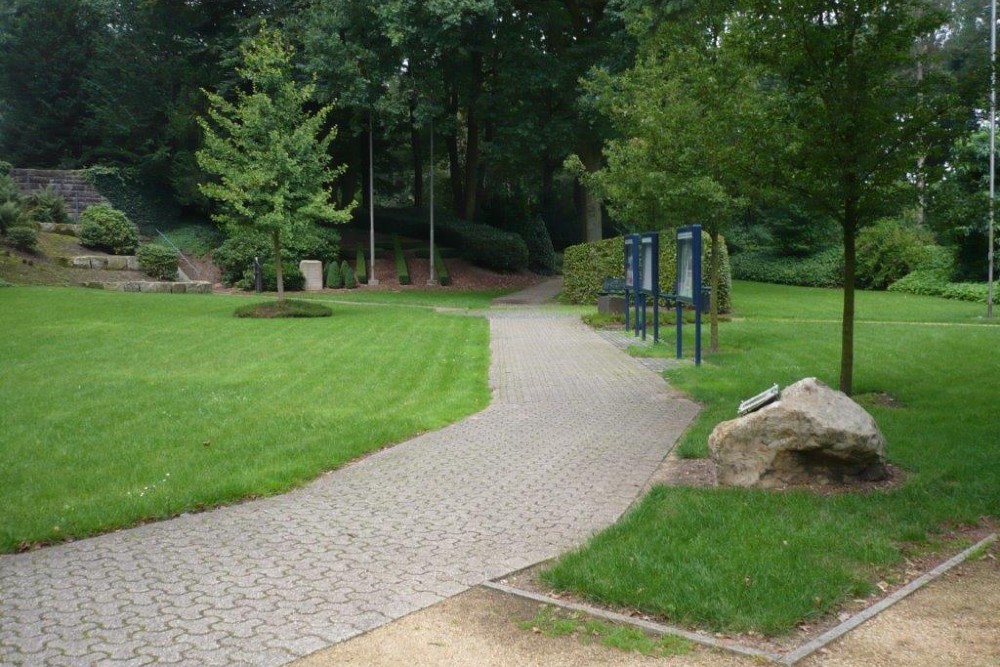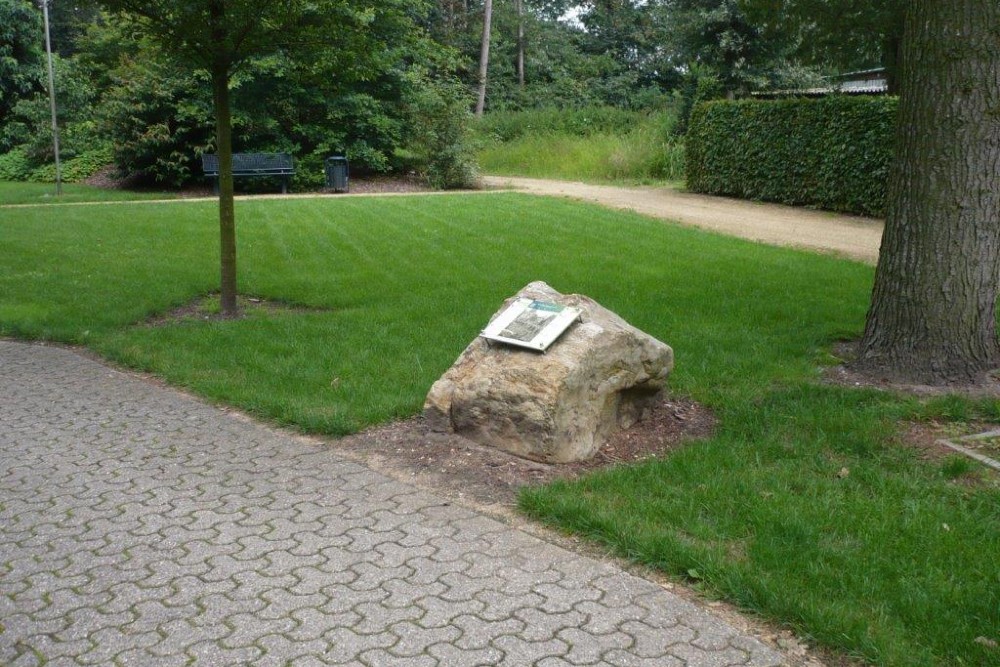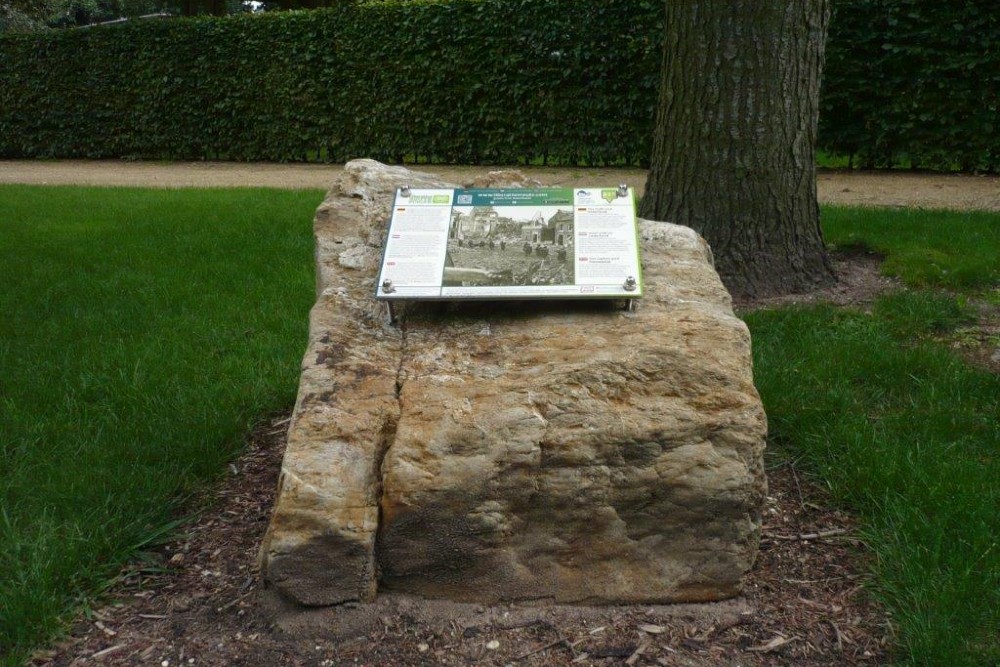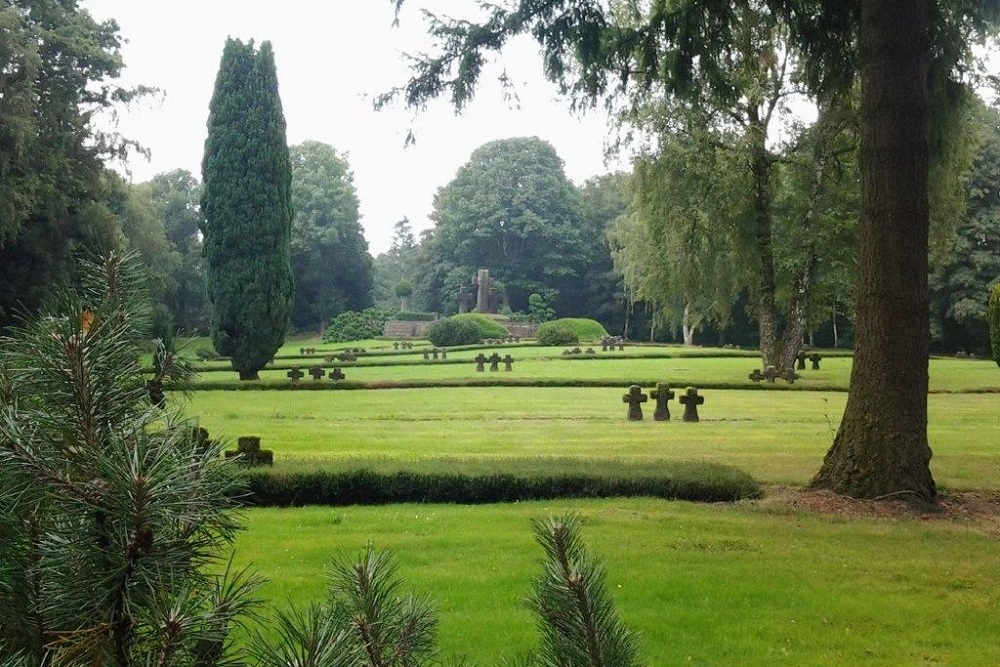Liberation Route Marker 215: For people and country
For people and country
During the large-scale Allied offensive in February-March 1945, the British occupy Weeze. Many young German soldiers are killed during Operation Veritable. Many decades later, children and grandchildren want to find out about their fathers and grandfathers last days.
In February 1945, headed by Field Marshal Montgomery, the Allies launch a major offensive from the Netherlands under the name 'Operation Veritable. An unprecedented huge force has been assembled around Nijmegen and Groesbeek. Its mission is to try and capture the northern half of the area
between the Maas and the Rhine.
From the 8th of February until the 11th of March, merciless fighting takes place in the Lower Rhine area. German troops, including many poorly armed and untrained men, literally defend themselves to the last. After all, Hitler had ordered every deserter would be shot at the spot. Despite flooding, bad weather and German troop resistance, the Allies are slowly gaining more and more ground. But this is at the expense of many young lives. At the British war cemetery in the Reichswald alone, 7654 are buried. Young men from England, Canada, Australia and New Zealand. Far from hearth and home. In the cold earth.
But the losses on the German side are also huge. During the last weeks of World War II, over 10,000 young men from all over Germany have lost their precious lives here in the Goch-Weeze-Uedem triangle.Many of them already know the war is lost and the 1.000-year Reich, Aldolf Hitler dreamed of will never exist. It must have been unbelievably difficult to remain at their posts in spite of inevitable defeat and to fulfil their duty to ‘people and country’ to their last breath.
Audiospot - For people and country
Liberation Route Europe is a certified Cultural Route of the Council of Europe. With hundreds of sites and stories in nine European countries, the route links the main regions along the advance of the Allied Forces in 1943-1945.
The entire route consists of themed routes that can be travelled by by hiking, walking, cycling and car. These routes pass numerous historical and interesting sites and tell stories from a multitude of perspectives that were important in the final phase of World War II.
Many routes feature listening spots, offering the opportunity to listen to a historical story at a location. In addition, many ‘Vectors of Memory’ have been placed, indicating that the passer-by is on one of the Liberation Routes.
The routes can be found on the Liberation Route Europe website or in the app through which many stories can also be listened to.
Do you have more information about this location? Inform us!
Source
- Text: TracesOfWar & Liberation Route Europe
- Photos: Arie van Wijngaarden (1, 2, 3, 4), Johan Tjallingii (5)
Nearby
Museum
Point of interest
Monument
- Memorial German War Cemetery Weeze - Weeze
- Ginkgo Tree German War Cemetery Weeze - Weeze
- Memorialstone Weeze - Weeze
Cemetery
Remembrance Stone
- Stumbling Stone Wasserstraße 55 - Weeze
- Stumbling Stones Kevelaerer Straße 32 - Weeze
- Stumbling Stone Alte Heerstraße 11 - Weeze
